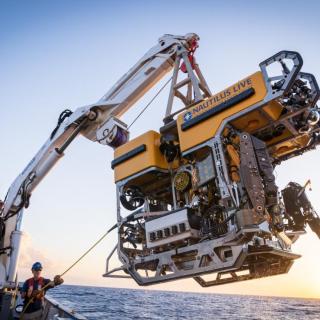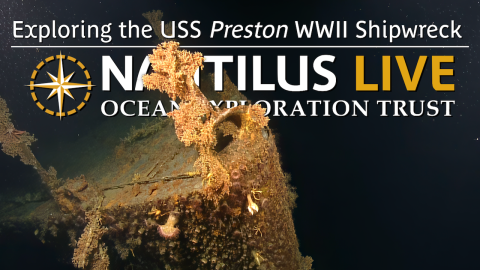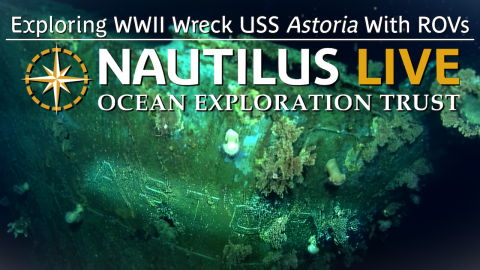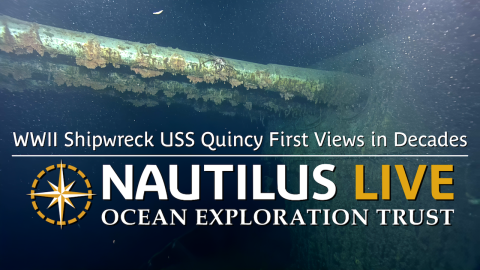Gorgeous Glass Squid in the Solomon Islands
While exploring the deep sea around the Solomon Islands, we caught sight of this gorgeous glass squid (family Cranchiidae) with ROV Hercules. Glass squid (aka cockatoo squid), have tiny pigment sacs (called chromatophores) that help them change colors (and even appear transparent) in the ocean. While this individual as spotted at 880 meters, some glass squid have been observed as deep as 2,000 meters. They have internal cavities that they’ll fill with ammonium chloride (which is lighter than seawater) to maintain buoyancy, conserve energy, and survive in the deep sea.
The Maritime Archaeology of Guadalcanal: Iron Bottom Sound (NA173) expedition is supported by NOAA Ocean Exploration via the Ocean Exploration Cooperative Institute. This exploration is made possible by the expertise, support, and collaboration of many partners, including NOAA Ocean Exploration, U.S. Naval History and Heritage Command, Solomon Islands government, University of New Hampshire Center for Coastal and Ocean Mapping/Joint Hydrographic Center, University of Rhode Island, and Japanese, Australian, and New Zealand archaeological colleagues.

Maritime Archaeology of Guadalcanal: Iron Bottom Sound
Located in the Solomon Islands between the islands of Guadalcanal, Savo, and Nggela, Iron Bottom Sound was the stage of five major naval battles between August and December 1942 which resulted in the loss of over 20,000 lives, 111 naval vessels, and 1,450 planes. These underwater cultural heritage sites now rest on the seafloor offshore Honiara in a confined area less than 25 nautical miles wide, 40 nautical miles long, and 1,400 meters deep.



